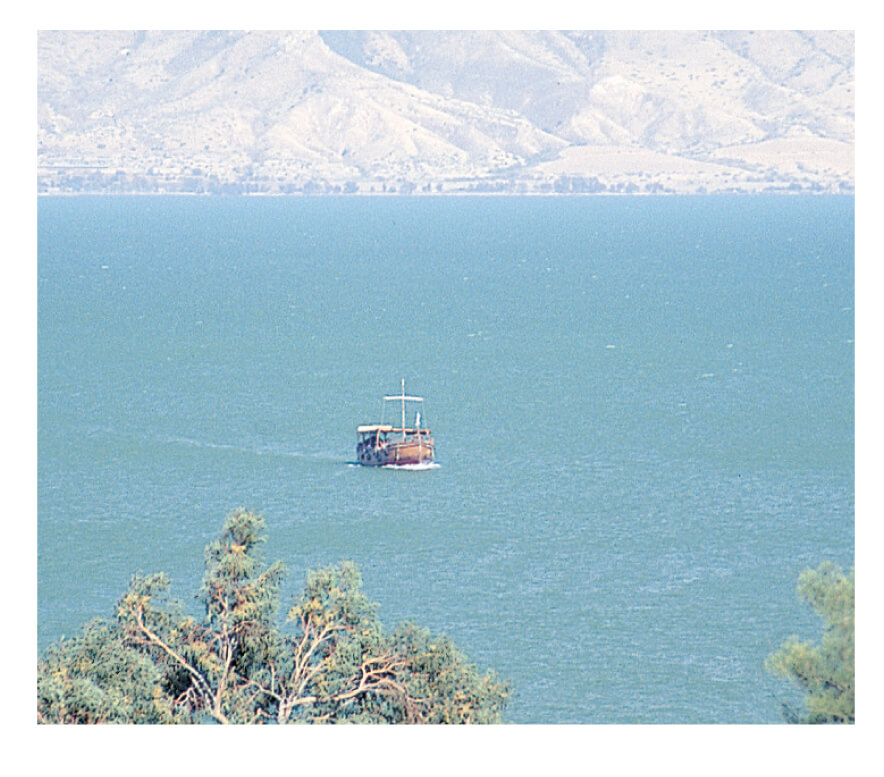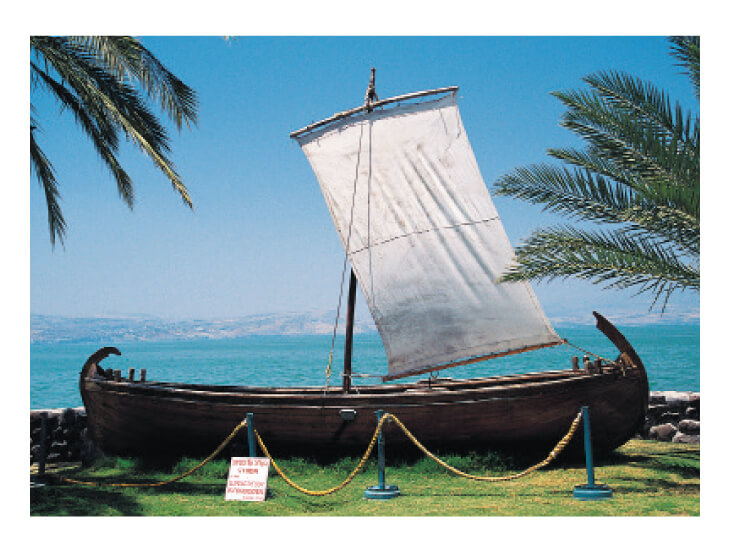
As the gospel story begins, Jesus insists that the disciples go ahead of him to the other side of the Sea of Galilee. He goes up the mountain to pray and catches up with the disciples very early the next morning by walking toward them on the water.
The disciples are at sea in a boat. The boat which holds them and keeps them afloat symbolizes the church. Strong head winds toss the boat on dangerous waves. This is Matthew’s image of strongly opposing views upsetting and threatening the community.
The risen Jesus is not with Matthew’s community in the same way the historical Jesus was. The Christians of the A.D. 80s are not always sure which way is the gospel way in their unsettled, transitional time. They move from one side to the other, falter and recover, as they gradually claim their mission to the nations and rely on their faith in Jesus and in themselves and each other.
Even when they seem sure of themselves, the way of Jesus and the way ahead of them leading through death to resurrection are not clear and fail safe. They are a church struggling to be born, whose day has not yet fully dawned.
- When has making your way forward involved conflict?
- What waves of uncertainty have you faced in making your way to God and deeper faith?
- When has a powerful idea or experience taken you off a course that was more familiar and brought you deep into controversy?

The exodus story echoes in this sea-crossing gospel. Like Moses Jesus goes apart on a mountain to pray. Like their ancestors escaping slavery, Jesus’ disciples face an seemingly impassible sea.
Matthew pictures Peter in a community struggling between the experience of having Jesus among them in the flesh and the promise of his risen presence. How does Jesus continue with this community? Is he a ghost, a memory, a real presence?
Peter puts Jesus to a test. He requests a miracle. “If this is really you, command me to come to you on the water.” This if statement repeats the bystanders’ taunts to Jesus on the cross—“If you are the messiah, save yourself.”
Jesus quickly says, “Come.” This scene invites faith. It suggests the journeys of early Christians to baptism as well as the journey of Jesus’ disciples to faith in his risen presence. An early Christian baptistry at Dura-Europa in Syria has this scene painted on its wall above a baptismal pool (A.D. 250).
Stepping into the water and the future requires faith for Peter and for all who follow. Boldly Peter steps out of the boat, outside the comfortable circle of disciples and friends. Immediately strong head winds and great waves take his attention off Jesus and fill him with fear and terror.
As he falters, Peter cries out to Jesus. Like the God of their ancestors, Jesus hears Peter’s cry and stretches out his arm to support Peter and meet him. Peter finds Jesus’ presence with him in faltering and crying out.
- Where are you in over your head and faltering?
- What are you crying out about?
Crossing to the other side of the lake is Matthew’s way of saying Jesus and later his disciples are taking the gospel beyond their community of mostly Jewish Christians. The eastern side of the lake is Gentile territory.
In its mission of spreading the gospel, the community for whom Matthew writes experiences conflicts. First of all, faith in Jesus brings Jewish Christians into conflict with family members who don’t follow Jesus.
Secondly, Gentile believers raise questions for Matthew’s community about whether to require these converts to observe Jewish sabbath, ritual purity, and dietary laws and customs as Jews do. Such questions heighten tensions among community leaders and members.
The Church today faces headwinds and cross currents on a global scale. Just as God became human in Jesus in the incarnation, Jesus’ message has become inculturated in diverse peoples around the globe. What will the Church be like as more Catholics live in Nigeria or Brazil than in Europe and America?
The Second Vatican Council expressed respect for other religions. Interfaith dialogues among neighbors and colleagues as well as among religious leaders and theologians challenge us to find ways to work together to bring God’s kingdom on earth as it is in heaven.
Pope Francis brings to Rome his experience from Argentina. He speaks from a new social location and from being involved with people in the barrios of Latin American cities. Pope Francis wants “a Church which is poor and for the poor, who have much to teach us. …We need to let ourselves be evangelized by them. The new evangelization is an invitation to acknowledge the saving power at work in their lives and to put them at the centre of the Church’s pilgrim way. We are called to find Christ in them, to lend our voice to their cause, but also to be their friends, to listen to them, to speak for them, and to embrace the mysterious wisdom which God wishes to share with us through them” (Joy of the Gospel, #198).
- What challenges face the world-embracing Church that is struggling to be born today?
